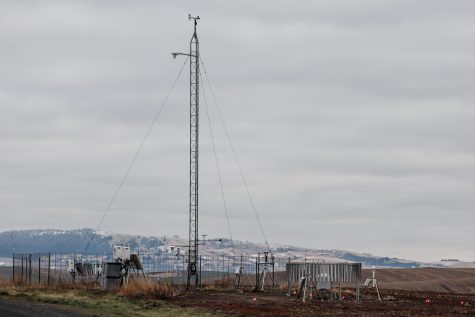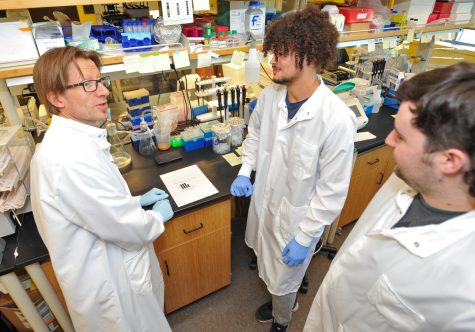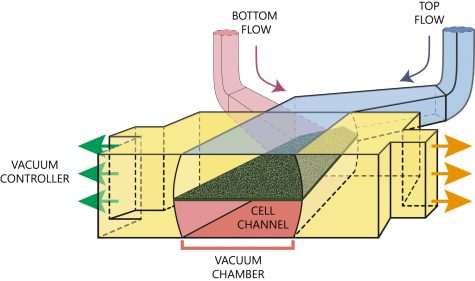Collaborative effort aims to reduce contaminants in rivers
Acidic water harms wildlife, human health
A collaboration with multiple universities will study solute transport in rivers.
February 3, 2022
A WSU research team received a grant of $821,567 from the National Science Foundation for the research and development of a global database. It will consist of metadata and river tracer test data to use with machine learning in order to calibrate a model of solute transport in rivers.
The WSU research team — composed of graduate and undergraduate students in the Voiland College of Engineering and Architecture — is led by Timothy Ginn, professor and interim associate chair of the Civil and Environmental Engineering Department.
Ginn said his group will collaborate with research teams from University of New Mexico, University of Illinois at Urbana-Champaign and New Mexico State University. Each research team is led by a principal investigator or PI.
The collaboration began in 2019 when a 2013 publication on river tracer tests revealed data models could not describe specific information of solute transport in rivers. The publication was written by Ricardo González-Pinzón, Department of Civil Engineering and Environmental Engineering professor at the University of New Mexico.
“When I wrote that paper in 2013, I summarized hundreds of tracer experiments from five different continents,” González-Pinzón said. “That information was used to create a conclusion that I made: our models didn’t capture all of the features that we saw in the database.”
He and the other PIs came together and wrote a research proposal for the National Science Foundation in 2019. The proposal was approved this year, with each research team receiving part of the grant fund, he said.
The teams will use river tracer tests to gather data. A tracer test is an experimental method used to determine and understand how solutes travel through rivers, Ginn said.
An individual will dump visible dye or “tracer” into the river and measure its concentration. The dye will disperse as it moves downstream. Another individual will await the arrival of the tracer downstream. This process is repeated at multiple points downstream, Ginn said.
“[A tracer test] gives a signature of how materials like contaminants, nutrients, pharmaceutical products from wastewater treatment plants and Earth weathering products undergo transport in the river,” he said.
Tracer tests show how solutes and contaminants move through the hyporheic zone. The hyporheic zone — or sediment bed — is an area between the river channel and its underlying rock layer. The research will primarily focus on this area, Ginn said.
A river will naturally attempt to degrade contaminants, which are classified into two categories: organic and inorganic (including metals), he said.
Organic contaminants are substances that contain organic carbon. These substances can be broken down by microbe bacterial species in the hyporheic zone, Ginn said.
Metals enter rivers through acid mine drainage. This occurs when rocks brought to the surface from mining become oxidized and dissolve. Microbe bacterial species cannot degrade metals, and rivers can only attempt to precipitate them out, Ginn said.
The presence of contaminants in rivers will decrease the pH, making the water more acidic. Contaminants will also decrease the water quality, damaging the environment and humans, he said.
“Acidic water dissolves even more minerals leading to increased metal solute concentrations in the river,” Ginn said. “[It] can be toxic to both microorganisms and vertebrates and macro-organisms.”
He said they need to know how long contaminants spend in the hyporheic zone. The development of a new model could help the research teams determine this.
Ginn said the new model will use gathered tracer test data from both the research teams and the database created by González-Pinzón.
“My role is the creation of a database that summarizes tracer tests in rears across the planet,” he said. “We’re going to create this database with input from the community, [which] means anybody that wants to participate, anywhere in the world.”
Current models cannot depict “tailing behavior,” a form of solute transport. Tailing behavior refers to solutes that spend significant time in the hyporheic zone. The solutes exit the river later than other solutes, Ginn said.
AI software will calibrate the model to describe solute transport better, said Alex Tartakovsky, Department of Civil & Environmental Engineering professor at the University of Illinois at Urbana-Champaign.
“All models are based on assumptions, and data is used to calibrate the models,” Tartakovsky said. “In our approach, instead of making assumptions, we want to learn parts of the model from beta.”
The research teams will also be working with a group led by Kenneth “KC” Carroll, professor at New Mexico State University, Ginn said.
He said their research began on Jan. 1 after receiving the grant. Ginn and his team have also worked together for over two years on proposal design and preliminary works.





















